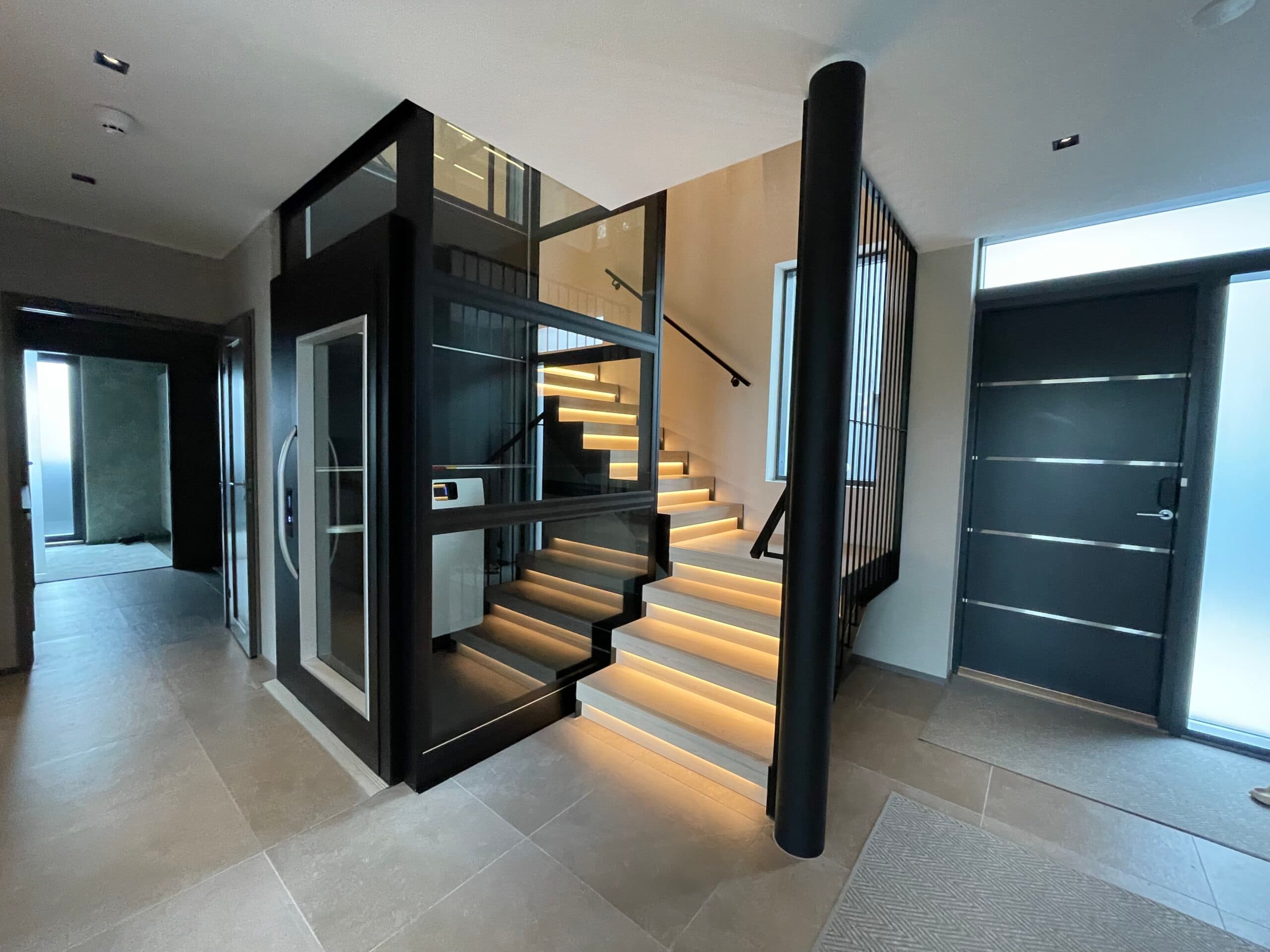Stairlift or home elevator: which is the best solution?
If you have mobility issues, home elevators are the most effective way to access all levels of your home. They are not, however, the only solution. A stair elevator, also known as a stair chair lift, can be equally effective under certain circumstances, especially when the budget is a consideration or your home lacks the space for home elevator installation. In this blog, we review the pros and cons of both solutions.
What is a stairlift elevator?
A home stair elevator is a mechanical system designed to lift people up and down stairs. Unlike home elevators, a stairlift elevator does not ascend and descend vertically. Instead, a rail with an attached motorized chair is installed along a wall adjacent to the stairs. The chair lift is powered by batteries that are continuously powered through standard wall outlets.
What is a home elevator?
A home elevator is a system that travels vertically from one level to another in a safe and efficient manner. The home elevator moves up and down along guide rails inside the shaft, driven by an electric motor.
Safety
One of the most important aspects: elevator safety. Both elevators have different features to make their use as safe as possible. For the stairlift, safety buckles on the chair prevent you from falling, while sensors prevent the lift from operating if they detect obstructions on the stairway. Similar sensors ensure the armrests and footrests are properly positioned.
With a home elevator, there is no need to transfer, which reduces the risk of falling and injuring yourself. You roll or ride into the lift on one floor and do the same again on the next. This elevator also has sensors and is fully equipped for safe transportation.
Comfort
A home stairlift elevator can be easily adjusted to accommodate your height, with padded armrests and a range of seat sizes for the most comfortable ride possible. Wheelchair users may find moving from the chair to the stairlift and back again difficult and would need to have a chair at the top and bottom of the stairs.
Most Cibes Symmetry home elevators are wheelchair accessible. The wheelchair rides in easily, and the elevator moves stably to the next floor(s).
Investment
If you’re on a fixed budget, a chair lift may be a more affordable option than a home elevator for straight stairwells. When you look at the price difference, it is also worth looking at the longer term. Adding a home elevator to your home increases the value of your property, and buying a home elevator is a sustainable, long-term investment. While a stairlift has an average lifespan of 10 years, a platform home lift will last for 30 years, and while a stairlift is often removed by the next owner when the house is sold, a platform lift often stays in place.
Stair lift or a home elevator?
It’s not unusual for people to initially opt for a stairlift elevator, only to replace it with a home elevator at some future point. This may happen either because mobility issues become more severe or homeowners become frustrated with the chair lift’s limitations. This increases overall costs as you’ll have paid for both mobility solutions. Better to make a careful decision now and select the option that will serve you over the long term.
It is essential to consider what you consider important parts of an elevator in your home. Your local dealer will be happy to help you make the choice.
